Discover 9 hidden attractions, cool sights, and unusual things to do in Bamako (Mali). Don't miss out on these must-see attractions: National Museum of Mali, Muso Kunda Museum of Women, and Sacred Heart Cathedral. Also, be sure to include Grand Mosque of Bamako in your itinerary.
Below, you can find the list of the most amazing places you should visit in Bamako (Bamako).
Table of Contents
National Museum of Mali
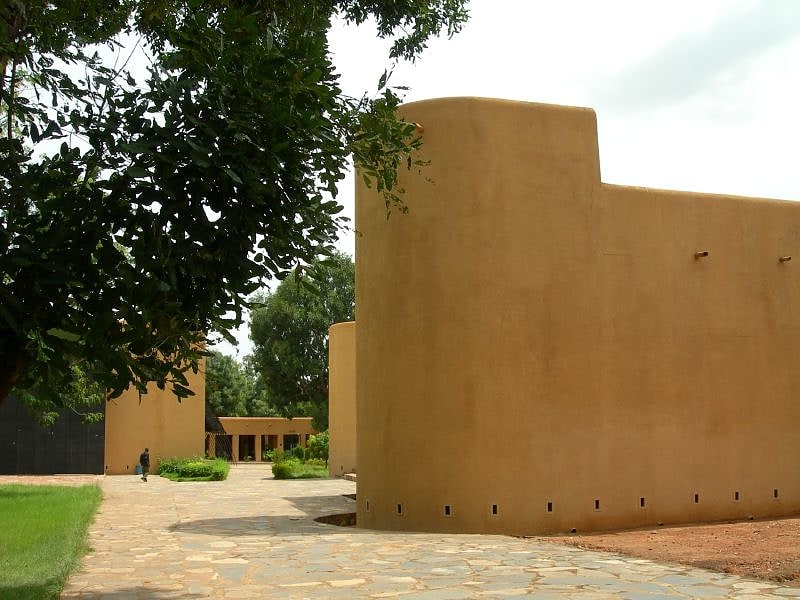
Also known as: Musée national du Mali
Museum in Bamako, Mali. The National Museum of Malí is an archaeological and anthropological museum located in Bamako, the capital of Mali. It presents permanent and temporary exhibits on the history of Mali, as well as the musical instruments, dress, and ritual objects associated with Mali's various ethnic groups.
Concrete models of several important cultural landmarks, such as the mosques of Djenné and Timbuktu are displayed outside on the grounds of the museum.[1]
Address: Ave de la Liberte, Bamako
Muso Kunda Museum of Women

The Muso Kunda Women's Museum, established in 1995, is an institution dedicated to showcasing and promote the cause of women in Mali. The Museum was founded by Malian feminist and historian Adame Ba Konaré in Bomako. The museum seeks to break stereotypes of women, celebrate their contributions, defend their rights and to create spaces for conversations.[2]
Sacred Heart Cathedral
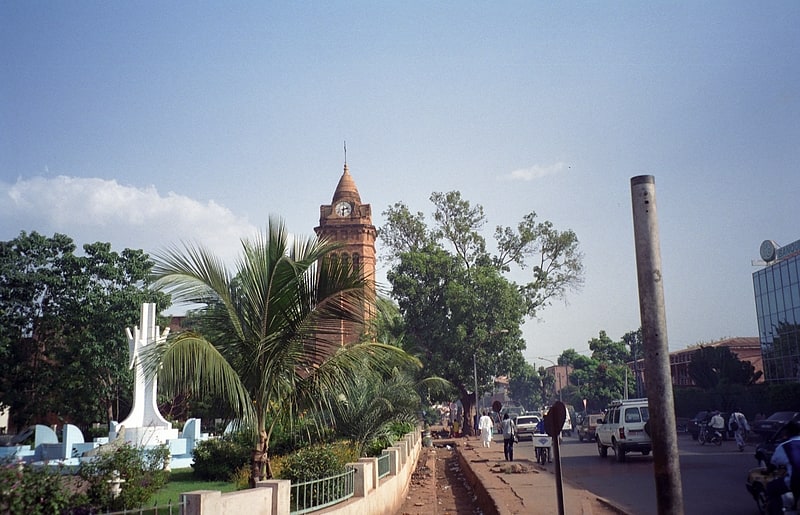
Also known as: Cathédrale du Sacré-Cœur-de-Jésus de Bamako
Catholic cathedral in Bamako, Mali. The Sacred Heart Cathedral is located in Bamako, the capital of Mali it serves as the cathedral of the Archdiocese of Bamako.[3]
Address: Rue de la Cathédrale, Bamako
Grand Mosque of Bamako
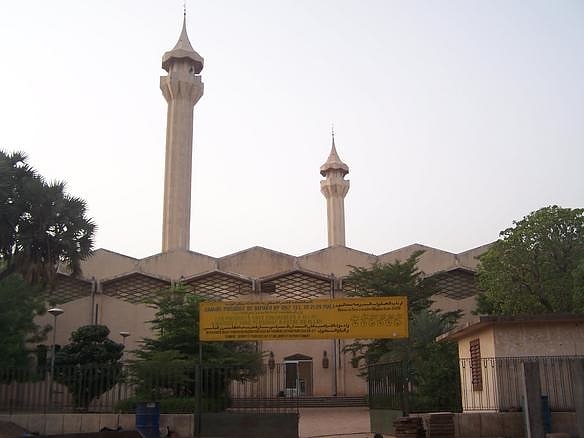
Also known as: Grande Mosquée de Bamako
Religious landmark with large minarets. Bamako Grand Mosque is a mosque in the city centre of Bamako, Mali. Built on the site of a pre-colonial mud-brick mosque, the current mosque was built through funding from the Saudi Arabian government at the end of the 1970s. One of the tallest structures in Bamako, it is situated north of the Niger River near the central market and the colonial-era Bamako Cathedral. With its tall cement minarets built around a square central structure, the building is stylistically closer to Saudi religious structures than West African. The mosque is visible from much of the city and is occasionally opened to tourists.[4]
Martyrs Bridge

Also known as: Pont des Martyrs
Bridge. The Martyrs Bridge of Bamako, Mali connects the older sections of the city to its suburbs on the south shore of the Niger River. One of three road bridges across the Niger at Bamako, it is also known as the "Old Bridge". Opened in 1957 when Mali was under French colonial rule, it was renamed the Martyrs Bridge in 1991 following the deaths of protesters against the rule of Moussa Traoré. Martyrs Bridge connects two of the main avenues of the city. Avenue Fleuve, a broad boulevard enclosing the Square Lamumba which runs north towards the Presidential palace. From the south of the bridge runs Avenue de l'Unite Africain, the major route from the city centre south to Bamako-Senou Airport.[5]
Bamako Zoo

Aquarium
Address: Route de koulouba, Bamako
National Library of Mali
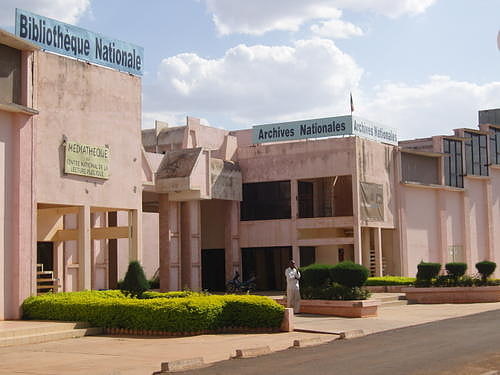
Also known as: Bibliothèque nationale du Mali
Library in Bamako, Mali. The National Library of Mali is located in Bamako, Mali.
In 1938, the Institut Français d’Afrique Noire (IFAN) was established to study the language, history, and culture of the peoples under French colonial rule in Africa. Following Mali's 1960 independence, in 1962 the IFAN Centre in Bamako was renamed by the Mali government the Institut des Sciences Humaines (Institute of Human Sciences) or the Mali Institute for the Study of the Humanities. The collections of Mali's National Library, National Archives and National Museum would eventually all be inherited from IFAN. On 29 February 1968, the library was transferred from Koulouba to Avenue Kasse Keita in Ouolofobougou, a section of Bamako. A 17 March 1984 law created the National Library.
It is headed by the Director, who is appointed by the National Director of Arts and Culture. The former selects five sections chiefs who are each responsible for one of the library's divisions: Cataloging and Bibliography Division; Periodical and Document Division; Loan and Information Division; Acquisitions, Processing, and Legal Deposit Division; and Binding and Restoration Division. As of 1989, the library staff numbered 28, 16 women and 12 men.
Books and periodicals are available free to the public for in-house viewing, though borrowing privileges may be obtained by becoming a registered cardholder. According to the United Nations, as of 2015 approximately 33 percent of adult Malians can read.
The library hosts some of the exhibits for African Photography Encounters, a biannual Bamako photography festival.[6]
MiG-21
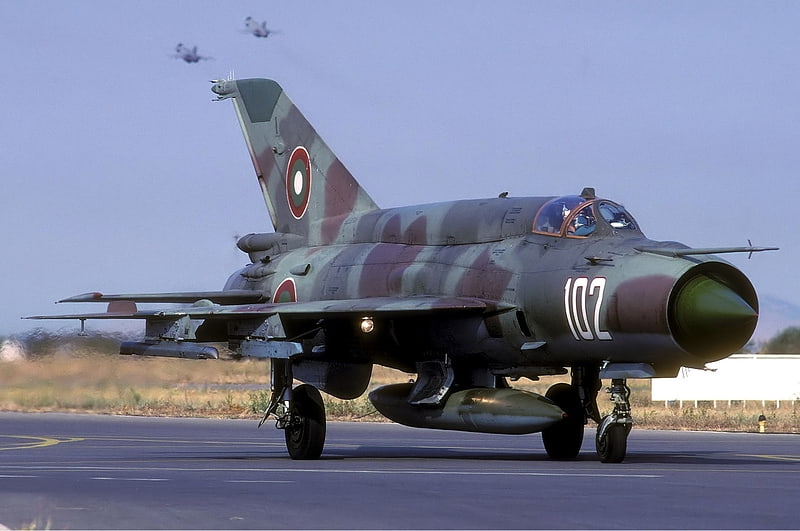
The Mikoyan-Gurevich MiG-21 is a supersonic jet fighter and interceptor aircraft, designed by the Mikoyan-Gurevich Design Bureau in the Soviet Union. Its nicknames include: "balalaika", because its planform resembles the stringed musical instrument of the same name; "Ołówek", Polish for "pencil", due to the shape of its fuselage, and "Én Bạc", meaning "silver swallow", in Vietnamese.
Approximately 60 countries on four continents have flown the MiG-21, and it still serves many nations six decades after its maiden flight. It made aviation records, becoming the most-produced supersonic jet aircraft in aviation history, the most-produced combat aircraft since the Korean War and previously the longest production run of a combat aircraft (now exceeded by both the McDonnell Douglas F-15 Eagle and General Dynamics F-16 Fighting Falcon).[7]
BCEAO Tower
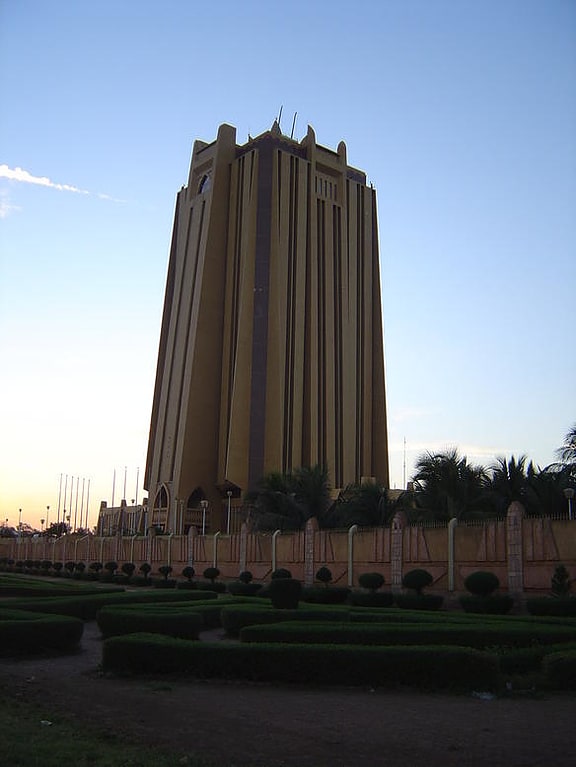
Also known as: Tour de la BCEAO
Building in Bamako, Mali. The BCEAO Tower is a building in Bamako, Mali. At 20 stories and 80m high, it is the tallest building in the West African region. It sits on the north bank of the Niger River in the center of the City of Bamako.
Classified as Neo-Sudanic architecture, the tower is modeled on the Sudano-Sahelian architecture of the famous Mosques of Djenné and Timbuktu. The building, dull orange in colour, matches the traditional banco architecture of West Africa, as well as that of the soil in the surrounding area. Its tapered shape resembles a termite hill from a distance. The distinctive "horns" (or "bat ears") on the building's top, and its deeply incised, vertically variegated facade are typical decorative elements of Sahelian architecture, found on buildings such as the Great Mosque of Djenné, and strongly resembling the 1923 Bamako Market building.
The BCEAO Tower is the Malian headquarters of the Central Bank of West African States, which provides development banking and government financial and currency services in several Francophone West African nations.
The building is located in the busy Commune III neighbourhood, where "Avenue Moussa Tavele" meets the waterside boulevard between the two main Bamako bridges: King Fahd Bridge a block west, and Martyrs Bridge three blocks east. Just to the east of the BCEAO complex, a park and formal garden mark where the diagonally running "Boulevard du Peuple" reaches the river. By contrast, small market gardens and launching points or river canoes line the edges of the river. With the Hotel de l'Amitié and the Grande Mosquée, the BCEAO Tower is one of three landmarks visible across most of the city.[8]
Address: Boulevard du 22 Octobre, Bamako